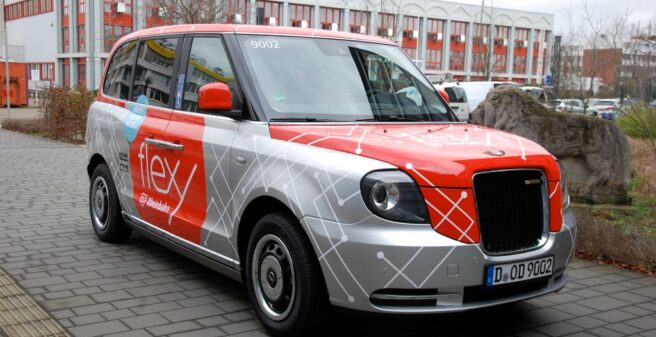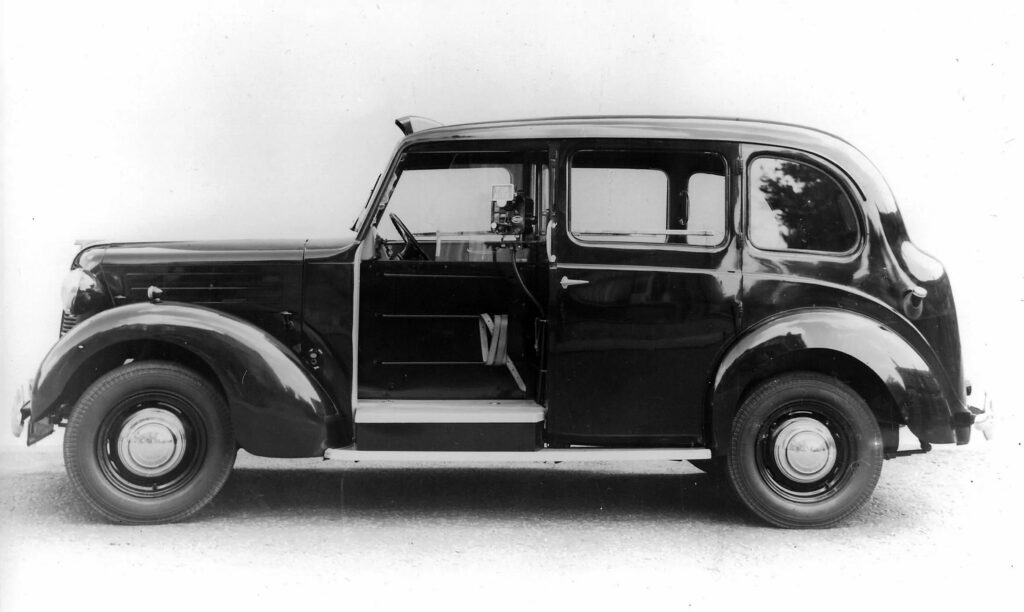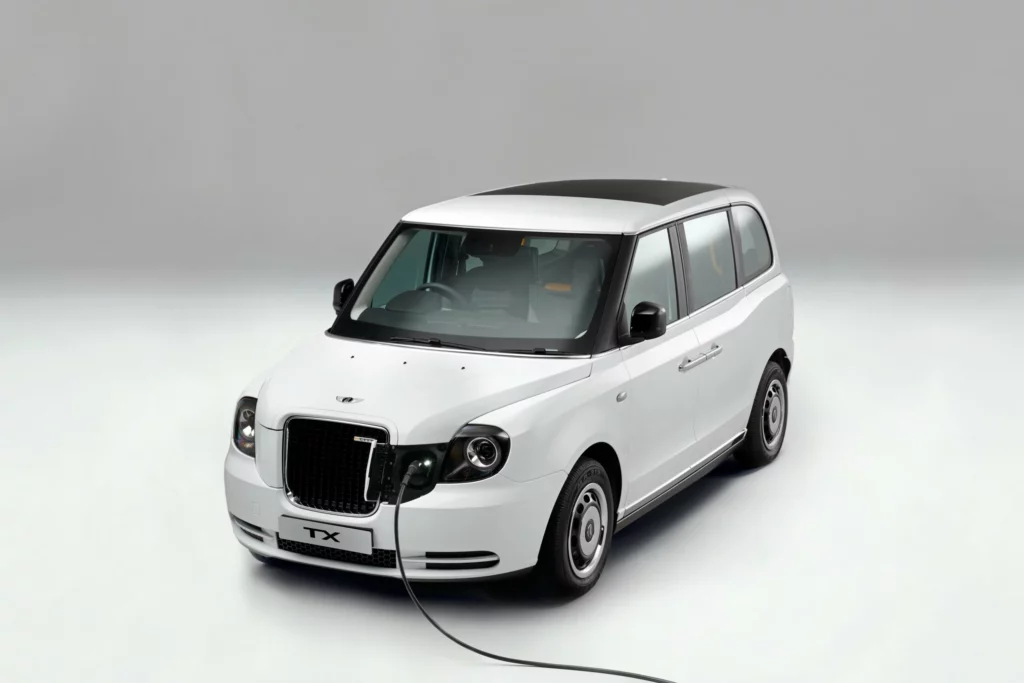
In spring 2023, Düsseldorf’s public transport operator Rheinbahn will launch its on-demand service Flexy. Flexy operates on demand, without a fixed timetable and serving uo to 800 virtual stops located as close as possible to the passenger’s starting point and destination.
Flexy will be on the road in the districts of Gerresheim, Hubbelrath, Knittkuhl and Unterbach, thus also better connecting Wildpark, Rennbahn and Unterbacher See to public transport. And to improve interconnectivity with other services, the important stops Staufenplatz, Gerresheim S-Bahn station and Vennhauser Allee are also part of the service area.
Flexy is ordered via an app. If other passengers want to travel from a similar starting point to a similar destination at the same time, these journeys are combined (ride pooling). The control centre gives the driver the trip order and informs him or her of the cheapest route.
The service will be available from 8 p.m. to 2 a.m. Monday to Friday, and from 9 a.m. to 2 a.m. on Saturdays, Sundays and public holidays. The fare is calculated according to the (shortest) distance between start and destination. Those who have a season ticket, are under 14 years old (children) or have limited mobility only have to pay 25% less. Similarly, a discount is given to all passengers when a passenger orders Flexy for more than one person.
The LEVC TX ECity
Four “London Taxis” of the manufacturer LEVC (London Electric Vehicles Company) of the type “TX ECity” (Rheinbahn car numbers 9001 to 9004) are used. LEVC was founded in 1908 and today belongs to the Chinese Geely Group (Geely Commercial Vehicle Group). The company started – still under a different name – in London, of course, where the famous “London Taxi” was born. Today, however, despite its name, LEVC is no longer based in the British capital, but since 2017 in Ansty in the Coventry region. The company confidently claims to be Britain’s only manufacturer to have built a production facility solely for electric vehicles, with an investment of 500 million British pounds to date.

The cars offer six seats for passengers, which are slightly staggered in the interest of maximum comfort. So there are no continuous benches, but six individual seats. The driver has his own separate area. This is where you notice the taxi origin: a partition protects the driver from robbery.
Today’s modern LECV TX ECity is designed to run purely on electricity from its batteries. And in the event that their range is not sufficient, it has a petrol engine as a range extender. The petrol engine then drives a generator that produces electricity, which the car then uses to drive electrically again. The engine runs constantly in the most favourable speed range and thus produces the fewest pollutants. Rheinbahn calls this combination a hybrid drive and emphasises that it is very environmentally friendly. The engineers at Ansty are working on developing a pollutant-free range extender.
The socket for the recharging cable, by the way, is located in the front to the left of the radiator grille.
The LEVC programme also includes not only the famous London taxi, but also the “VN 5”, a van derived from it, and a “shuttle version”. Another type of vehicle is reportedly being worked on.
Die Wagen bieten sechs Sitzplätze für Fahrgäste, die im Interesse größtmöglicher Bequemlichkeit etwas versetzt angeordnet sind. Es gibt also keine durchgehenden Sitzbänke, sondern eben sechs Einzelsitze. Der Fahrer hat seinen eigenen abgeteilten Bereich. Da merkt man die Abstammung vom Taxi: eine Trennscheibe schützt den Fahrer vor Überfällen.
Der heutige moderne LECV TX ECity ist gedacht für den rein elektrischen Betrieb aus seinen Batterien. Und für den Fall, dass deren Reichweite doch einmal nicht ausreichen sollte, verfügt er als Range Extender über einen Benzinmotor. Der treibt dann einen Generator an, der den Strom erzeugt, mit dem der Wagen dann wieder elektrisch fährt. Dabei läuft der Motor konstant im günstigsten Drehzahlbereich und erzeugt so auch die wenigsten Schadstoffe. Die Rheinbahn bezeichnet diese Kombination als Hybrid-Antrieb und betont, dass sie sehr umweltfreundlich sei.
Doch auch LEVC will, dass der Range Extender kein Verbrennungsmotor mehr ist. Weshalb die Ingenieure in Ansty daran arbeiten, einen schadstoff-freien Range Extender zu entwickeln.
Die Steckdose für das Nachlade-Kabel übrigens findet sich in der Front links neben dem Kühlergrill.
Das Programm von LEVC umfasst außerdem nicht nur das berühmte Londoner Taxi, sondern auch den „VN 5“, einen daraus abgeleiteten Lieferwagen, und eine „Shuttle-Version“. An einem weiteren Fahrzeugtyp werde – so hört man – gearbeitet.


